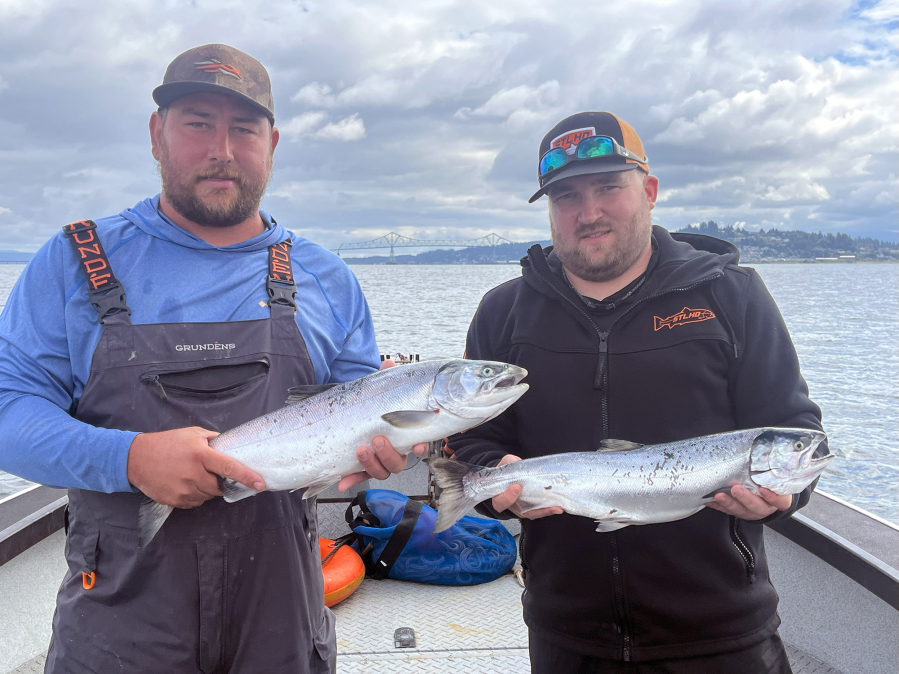Anticipations are high for the upcoming Coho salmon fishing season on the Columbia River, offering an optimistic outlook for anglers. Recent indications from the ocean waters at the mouth of the Columbia River suggest that Coho fishing should yield favorable results, with saltwater expeditions already boasting swift catches of Coho salmon.
Although Chinook retention concluded on September 4 from Buoy 10 to Tongue Point, the dynamic nature of fisheries management permits additional Chinook retention opportunities through December 31, concurrently with the ongoing Coho fishery. This year’s forecast anticipates a robust adult fall Chinook run, estimated at 554,000, alongside a noteworthy run of nearly 600,000 adult Coho.
For enthusiasts who prefer pursuing Chinook, the lower Columbia region has proven productive, with Chinook Landing and the Gleason boat launch serving as fruitful locations for anglers to secure substantial catches.
Ryan Lothrop, the Columbia River fishery manager for the Washington Department of Fish and Wildlife (WDFW), acknowledged that the Chinook component of the Buoy 10 fishery exhibited some variability this year, though it did not necessitate any closures. He noted that this year’s season structure, including brief closures, has functioned effectively, even amid fluctuating catch rates. Mr. Lothrop observed, “We are seeing effort on track to be the same as last year, but catch rates sort of bounced around. It started better than expected, but then it slowed down. Then the first day after the closure was super hot. Then it kind of fell back down again.” The slight decline in catch rates was not entirely surprising, as the prior year witnessed a record Bonneville pool tule run, making consecutive record runs an unrealistic expectation.
Moreover, Mr. Lothrop highlighted that when the Buoy 10 fishery was temporarily closed, most anglers and guides remained in the vicinity of Astoria, given the available options above Tongue Point and the promising offshore opportunities.
Reports of abundant Coho fishing in the ocean have sparked enthusiasm among guides and anglers for the forthcoming upriver migration of these fish. Oregon fishing guide Bob Rees, who has been focusing on saltwater fishing, has been particularly impressed with the size and numbers of Coho being caught. He noted that a boat limit can be reached within an hour of fishing when conditions are as favorable as they are now. Rees has achieved remarkable success by trolling a spinner chunk bait, complemented by a 360 flasher, and occasionally a Spinfish, a bait-filled plug. His preference for the chunk bait spinner has remained consistent due to its exceptional performance.
While Coho have not yet inundated the river, certain tributaries are already showing promise for Coho fishing. The Lewis River has witnessed some notable catches, and according to Lothrop, the mouth of the Lewis River has been productive for both Chinook and Coho.

For Chinook enthusiasts, the Vancouver area has recently provided excellent opportunities, with a substantial number of fish moving over the dam. Moreover, fishing activity has picked up in Drano Lake, at the mouth of the White Salmon River, and at the mouth of the Hood River.
As of September 7, over 250,000 fall Chinook have passed over Bonneville Dam, with nearly 41,000 Coho making the same journey. Coho are starting to congregate near the mouths of tributaries, with action reported at the Cowlitz and Lewis Rivers on the Washington side, as well as near the mouth of the Sandy River.
Anglers are reminded to be aware of the specific regulations in different sections of the Columbia River, as well as the use of barbless hooks for all salmon fishing activities, in adherence to the guidelines outlined on the WDFW website.
Images/Source: TheColumbian





